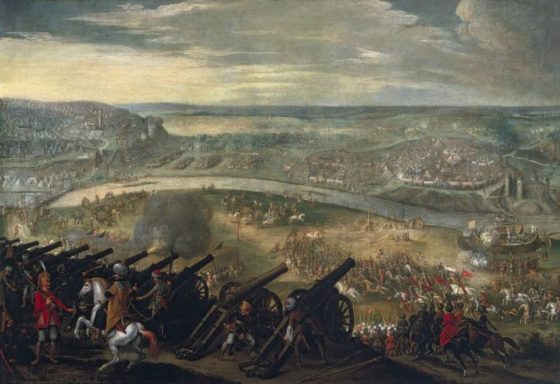
Sorry about running yet another item about the U.S. Civil War this week, but this story solves a mystery surrounding Confederate general Stonewall Jackson’s death and was just too interesting to pass up. Enjoy!
Next to Robert E. Lee, Lt. Gen. Thomas “Stonewall” Jackson was possibly the most brilliant commander of the Confederacy. Although ironically, only hours after the greatest triumph of his career, the 39-year-old West Point graduate was mortally wounded – and by his own men.
One-hundred and fifty years ago today (May 2, 1863), Jackson led an entire army corps deep into the Virginian underbrush only to emerge right on top of the undefended Union right flank near Chancellorsville. In fact, the rebels struck while much of the enemy army was relaxing in the late day sun. With bayonets fixed, Jackson’s men charged the dumbfounded Yankees sending them reeling back in utter disarray. Darkness fell as the Confederates pressed home the attack.
As Jackson returned to his lines in the darkness, pickets from the 18th North Carolina Infantry mistook their commander and his entourage for northern scouts and opened fire. The general was wounded in a hail of musketry and had to be carried from the field. After losing his arm to the surgeon’s knife, Jackson fell ill and died on May 10.
Supposedly, the men of the 18th never forgave themselves for robbing the Confederate cause of its most gifted leader — particularly when considering that the pivotal battle of Gettysburg was to be fought (and lost) only two months later.
However, a study published this week in Sky and Telescope by astronomer Don Olson and Texas State University researcher Laurie E. Jasinski seems to vindicate the unlucky sentries.
According to the two scientists, the glare of a particularly bright moon that just happened to sit low in the sky and behind Jackson and his officers that evening likely obscured the true identity of the group from the sentries. With no way to discern much about the shadowy figures approaching from the enemy lines, its no surprise that the pickets opened fire. The two researchers arrived at their conclusion after painstakingly recreating the moon’s position on that date using maps of the incident and astronomical modelling.
“Once we calculated the compass direction of the moon and compared that to the detailed battle maps… it quickly became obvious how Stonewall Jackson would have been seen as a dark silhouette, from the point of view of the 18th North Carolina regiment,” Olson was quoted as saying in Space.com.
To read more about the study, click here. The research has been widely reported in the past 24 hours — CNN, NBC and The Washington Post all have coverage of it. Hopefully though, you read it here first. :o)










I did read it here first! Great article.
Yet one more classic example of why you should make sure your target before firing.